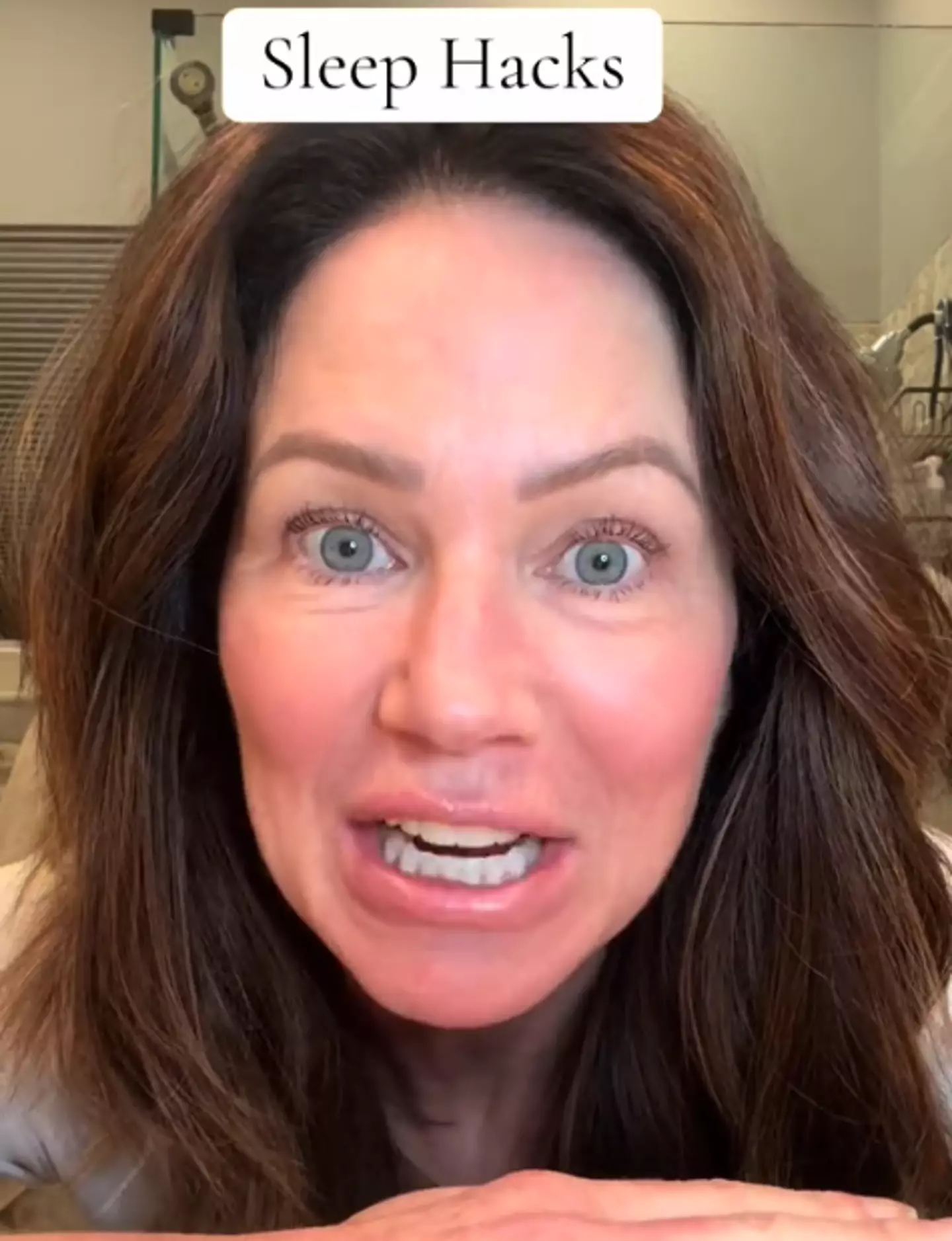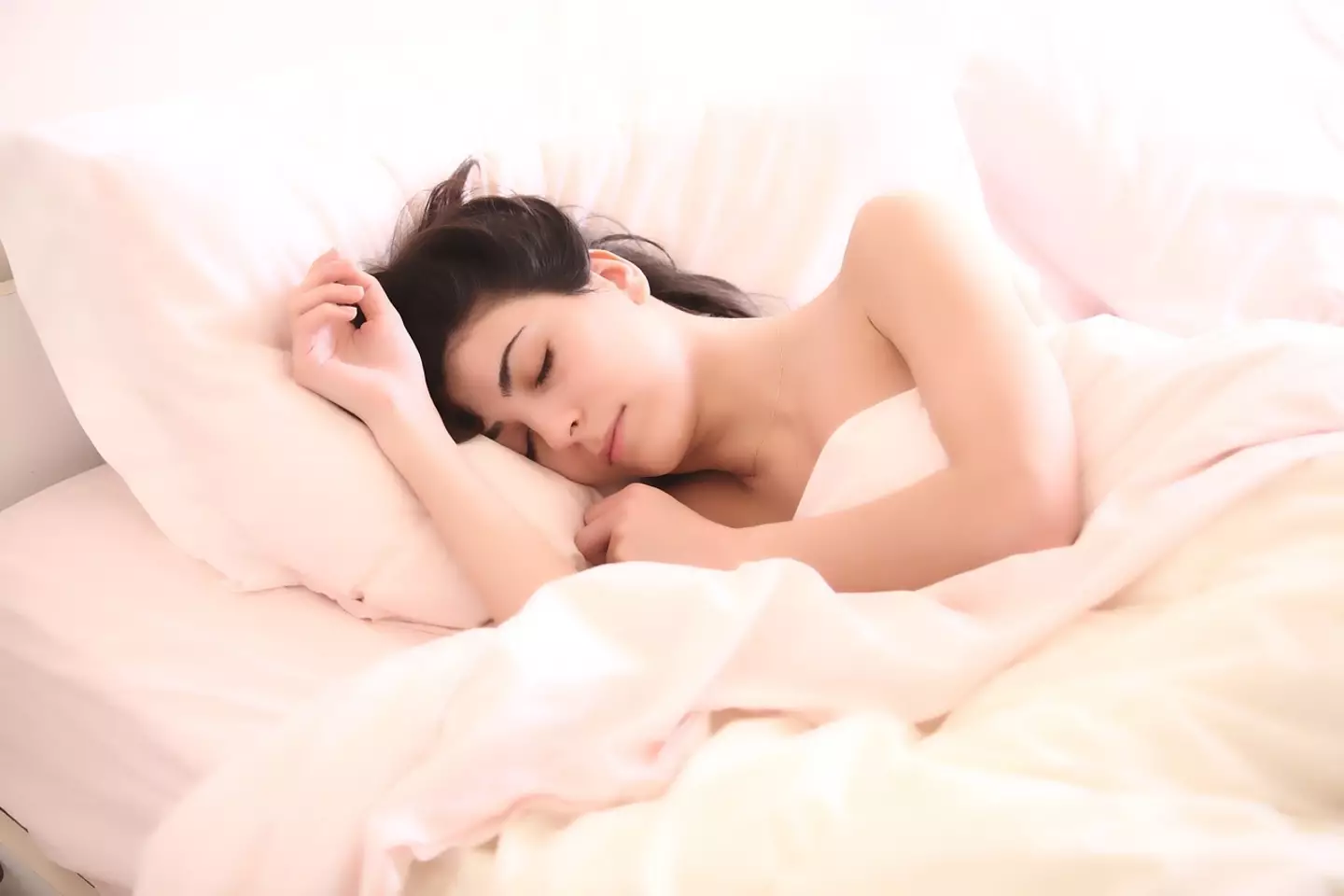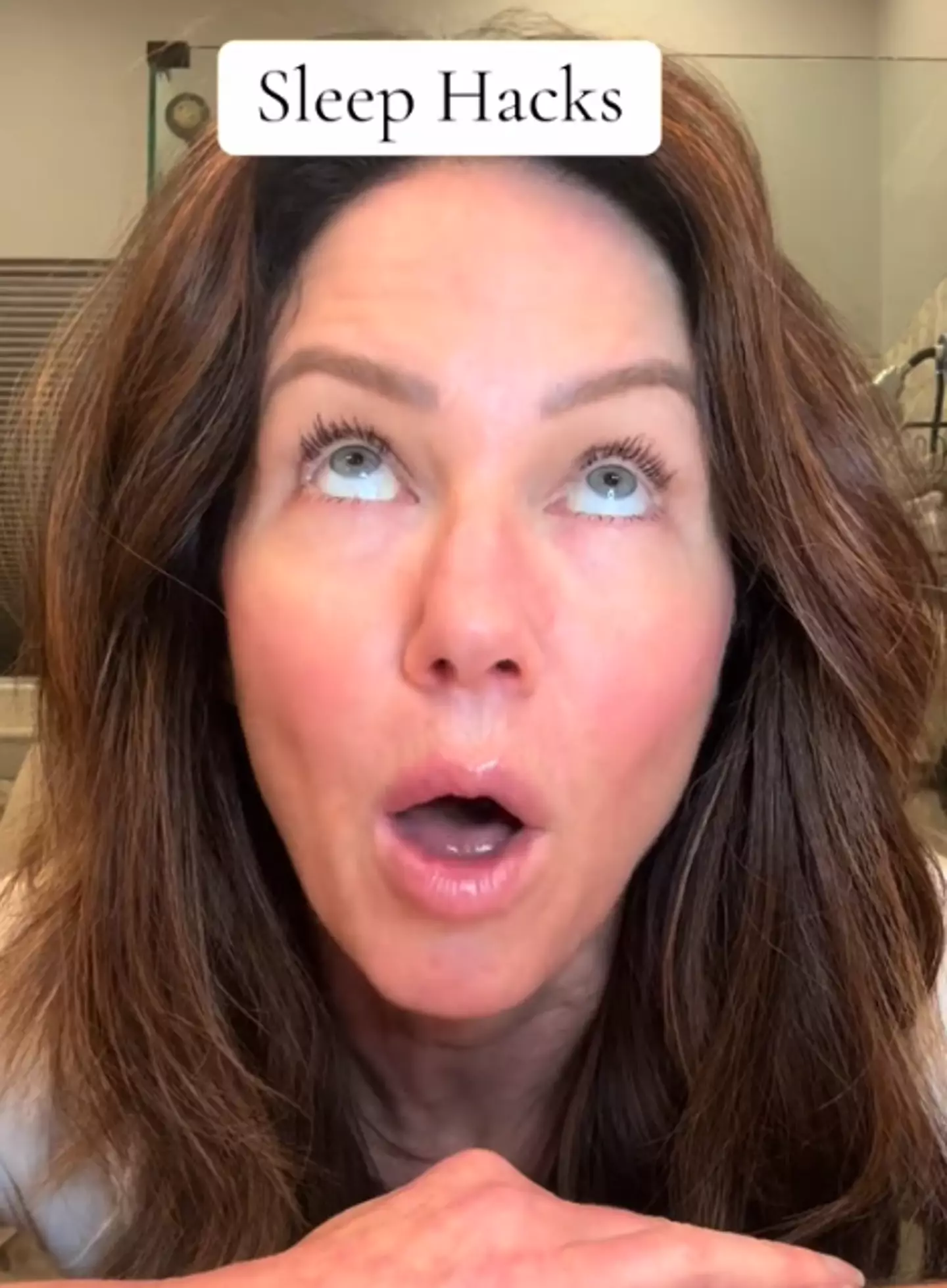Struggling to fall asleep? You’re not alone. For a species that spends a third of our lives in bed, we sure have a hard time mastering the art of restful slumber. Whether it’s the endless buzz of our phones or racing thoughts that won’t let us unwind, the struggle is real. But what if one simple eye movement could be the answer to your sleepless nights?
TikTok sleep expert Heather, known as @prettysickheather, has shared a surprisingly simple trick that she claims works “every single time.” Curious? Let’s break it down.
Why Falling Asleep Feels So Hard

prettysickheather/TikTok
Before diving into the trick, it’s worth understanding why sleep can sometimes feel elusive.
- Technology Overload: Blue light from phones, tablets, and TVs disrupts melatonin production, making it harder to wind down.
- Stress and Overthinking: A common culprit, stress keeps your mind spinning over work, relationships, or even that embarrassing moment from 12 years ago.
- Poor Sleep Hygiene: Late-night snacking, irregular sleep schedules, and caffeine too close to bedtime all wreak havoc on your sleep cycle.
If you’ve tried every trick in the book—from counting sheep to sipping chamomile tea—and still can’t drift off, this TikTok hack might be the breakthrough you’ve been waiting for.
The Eye Trick: A Simple Sleep Hack That Works Every Time
Heather’s eye movement routine is as simple as it is effective. Here’s how to do it:
Step 1: Close Your Eyes
This technique requires your eyes to be closed. (Let’s be honest, it’s less creepy for anyone sharing your bed too!)
Step 2: Look Up and Down
- With your eyes closed, look all the way up, then all the way down.
- Repeat this motion slowly, letting your eyelids relax.
Step 3: Side-to-Side Movement
- Look all the way to the left, then to the center, and finally to the right.
- Continue this gentle side-to-side movement.
Step 4: Circular Motions
- Imagine a clock with your eyes closed.
- Move your eyes in a clockwise motion, as if tracing the face of a clock.
- Then, reverse the motion, moving counterclockwise.

Pixabay
Step 5: Pull Everything Together
- Finish the routine by combining all movements—up, down, left, right, clockwise, and counterclockwise.
Heather promises that most people don’t make it past two cycles before nodding off. In fact, she says she barely makes it through one and a half!
Why This Eye Trick Works
The magic of this technique lies in its ability to relax both your mind and body.
- Activates the Parasympathetic Nervous System: The slow, deliberate movements help activate your body’s rest-and-digest mode, signaling it’s time to wind down.
- Distracts from Overthinking: By focusing on these simple motions, your mind is less likely to spiral into overthinking or stress.
- Relaxes Eye Muscles: Gentle eye movements ease tension built up from staring at screens all day, promoting overall relaxation.

prettysickheather/TikTok
The Science Behind Sleep Hacks
While Heather’s trick may sound unconventional, it taps into established principles of sleep science.
Eye Movements and Relaxation
Eye movements are closely tied to brain activity. Techniques like EMDR (Eye Movement Desensitization and Reprocessing) use similar methods to help patients manage anxiety. This routine leverages the calming power of eye movement to prepare your body for rest.
Breaking the Cycle of Insomnia
One of the biggest challenges for insomniacs is the frustration of being unable to sleep. This trick shifts your focus away from that frustration, creating a calm mental state conducive to sleep.
Other Tips for Enhancing Your Sleep Routine
Want to amplify the effects of this trick? Pair it with these sleep-boosting habits:
1. Stick to a Sleep Schedule
Go to bed and wake up at the same time every day—even on weekends. This consistency trains your internal clock, making it easier to fall asleep.
2. Avoid Screens Before Bed
Blue light from devices can delay melatonin production, making it harder to drift off. Set a “digital sunset” by turning off screens at least an hour before bed.

3. Create a Relaxing Bedtime Routine
Incorporate calming activities like reading, journaling, or meditation to signal to your brain that it’s time to sleep.
4. Keep Your Bedroom Cool and Dark
Your body temperature naturally drops during sleep, so a cooler room can help you fall asleep faster. Invest in blackout curtains to block out light.
5. Limit Stimulants
Avoid caffeine and alcohol in the hours leading up to bedtime. While alcohol may initially make you feel drowsy, it disrupts the quality of your sleep.
Common Sleep Mistakes to Avoid
As helpful as Heather’s trick is, there are still pitfalls that can sabotage your sleep:
- Dwelling on Stressful Thoughts: If your mind tends to spiral, try writing down worries before bed to “clear the slate.”
- Using Snooze as a Crutch: Snoozing might feel good in the moment, but it interrupts your sleep cycle, leaving you groggier.
- Overthinking Sleep Itself: Paradoxically, obsessing over falling asleep can keep you awake. Focus on relaxation rather than the act of sleeping.
Real-Life Reactions to Heather’s Trick
Heather’s TikTok video has sparked lively discussions, with users sharing their experiences and sleep woes.
- One user joked: “I’ll try this, but I still need to stop replaying embarrassing moments from high school!”
- Another admitted: “Middle of the night is prime overthinking time for me. Maybe this will help!”
Clearly, we all have unique sleep struggles—but a simple, actionable hack like this might just be the universal solution we need.
Conclusion: Sleep Smarter, Not Harder
Heather’s simple eye trick is a testament to the power of small, intentional actions. Whether you’re battling occasional restlessness or chronic insomnia, this technique is easy to incorporate and offers a soothing way to shift your mind and body into sleep mode.
The next time you find yourself wide awake, staring at the ceiling, give this trick a try. You might just wake up the next morning wondering how you ever managed without it. Sweet dreams!


